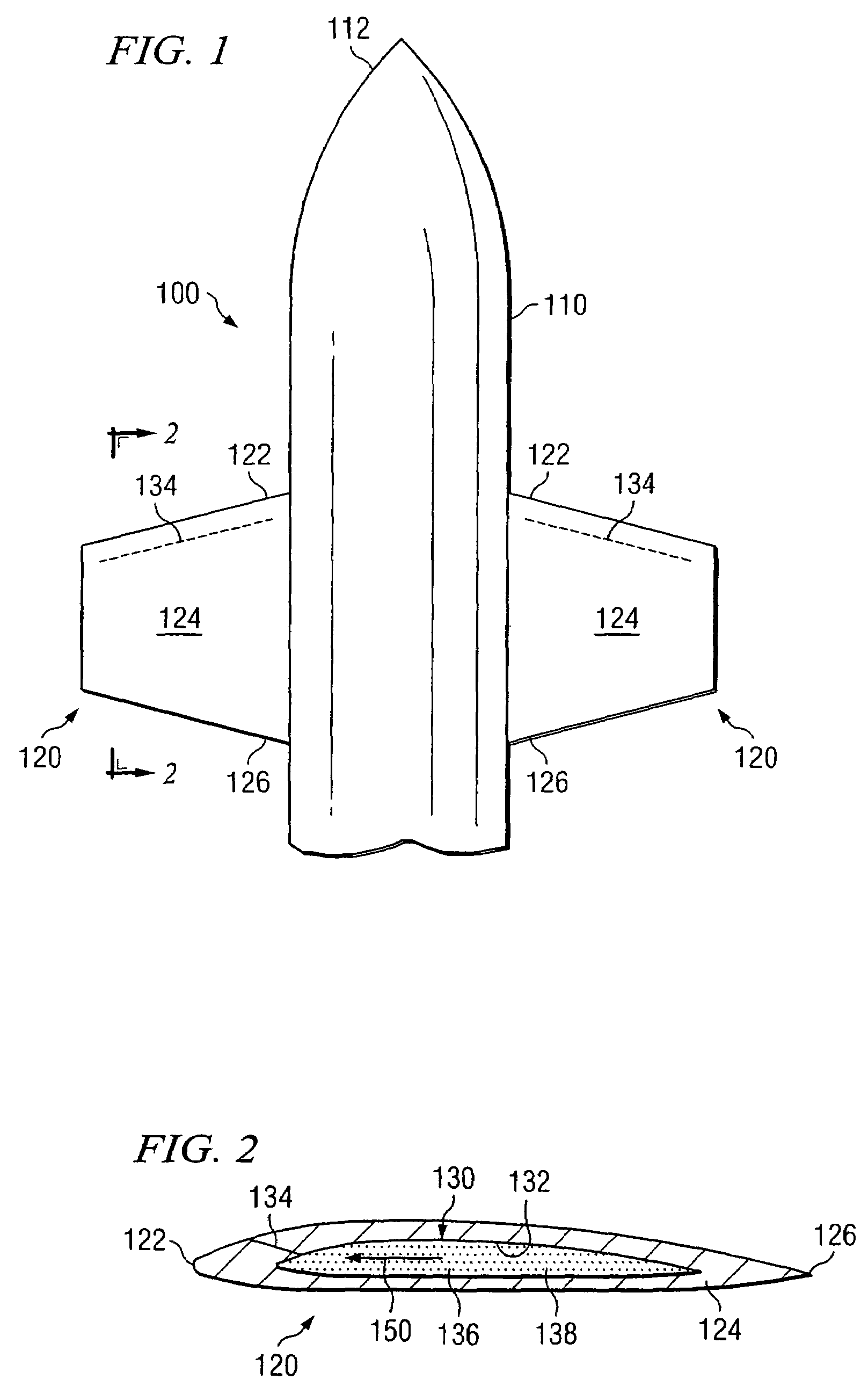System and method for internal passive cooling of composite structures
a composite structure and passive cooling technology, applied in the field of air vehicles, can solve the problems of compromising the structural integrity of the composite structure, reducing the properties of the composite, and limited use of such composites, and achieves the effects of reducing thermal loading, high speed, and cost-effectiveness
- Summary
- Abstract
- Description
- Claims
- Application Information
AI Technical Summary
Benefits of technology
Problems solved by technology
Method used
Image
Examples
Embodiment Construction
[0010]It should be understood at the outset that although example embodiments of the present invention are illustrated below, the present invention may be implemented using any number of techniques, whether currently known or in existence. The present invention should in no way be limited to the example embodiments, drawings, and techniques illustrated below, including the embodiments and implementation illustrated and described herein. Additionally, the drawings are not necessarily drawn to scale.
[0011]As briefly referenced in the Background, the use of composites on a control surface of an air vehicle is desirable because the composite can provide adequate strength and stiffness at a lower weight than metals. Additionally, composites are generally cheaper than ceramics designed to sustain high thermal loading. However, the use of composites in a high speed, high thermal loading environment is prohibitive because the composite's resin glass transition temperature (Tg) can be exceed...
PUM
 Login to View More
Login to View More Abstract
Description
Claims
Application Information
 Login to View More
Login to View More - R&D
- Intellectual Property
- Life Sciences
- Materials
- Tech Scout
- Unparalleled Data Quality
- Higher Quality Content
- 60% Fewer Hallucinations
Browse by: Latest US Patents, China's latest patents, Technical Efficacy Thesaurus, Application Domain, Technology Topic, Popular Technical Reports.
© 2025 PatSnap. All rights reserved.Legal|Privacy policy|Modern Slavery Act Transparency Statement|Sitemap|About US| Contact US: help@patsnap.com


